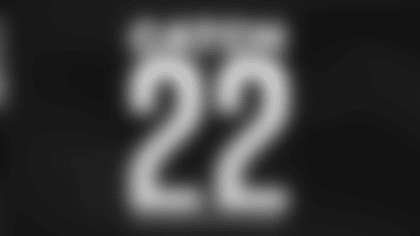If you asked Patriots fans what the biggest remaining need on the roster is, the majority would likely say a blindside protector for QB Drake Maye.
Recently, New England has gone year-to-year at left tackle without a permanent solution at a premium position on the offensive line. Last season, the Patriots offensive line was among the worst in football, ranking last in pass-blocking win rate (51%) and second-to-last in run-blocking win rate (67%). This offseason, head coach Mike Vrabel and personnel chief Eliot Wolf added veterans at right tackle (Morgan Moses) and center (Garret Bradbury) to take steps toward fixing the O-Line.
As things currently stand, the Patriots have penciled in starters at three spots on the line: Moses (RT), Bradbury (C), and the one holdover from a year ago is RG Mike Onwenu. That means the two spots on the left side of the line are up for grabs. Recent draft picks Cole Strange, Layden Robinson, and Sidy Sow will likely compete for the starting left guard job in training camp, while adding a rookie into that competition is possible. However, the Pats have not made a major addition at left tackle.
This year's top left tackle prospect has divided the fanbase. LSU's Will Campbell is a three-year starter at left tackle and two-time team captain at an SEC powerhouse. That resume would typically make him a no-brainer for a tackle-needy team, but Campbell has become a divisive prospect due to his outlier arm length and wingspan.
Campbell measured in with 32 5/8-33 inch arms, depending on which measurement you trust. That isn't a deal-breaker for Campbell to stick at tackle, as there are examples of OTs around the 33-inch threshold who have succeeded. But his 77 3/8-inch wingspan would make him the narrowest offensive tackle recorded at the combine since at least 1999.
Arm length is important for tackles because it provides a margin for error. By having longer arms, blockers can put more space between themselves and pass-rushers, allowing them more time to react to the rushers' movements while being able to keep rushers out of their chests. Wingspan measures how wide a blocker's body is. In theory, the wider the body, the harder it is to get around that particular lineman.
Ultimately, the most important thing is tape. More specifically, will Campbell's shorter arm length and wingspan prevent him from playing left tackle at a high level? Below, we'll dive into Campbell's tape to answer the all-important questions about a prime Pats target in the first round.
Pass Blocking
Before we get into the arm length/wingspan discussion, there's some context that separates Campbell's pass-blocking reps from others in this year's draft class.
At LSU, Campbell was in a pass-first offense with him one-on-one pass-blocking on NFL-style drop-backs. The Tigers offensive lineman's production wasn't fluffed up by wide splits or a high volume of quick throws and screens. Plus, Campbell faced several pro-caliber pass rushers over the last three seasons, including projected top-100 picks Shemar Stewart, Kyle Kennard, Jihaad Campbell, and Nic Scourton, among others.
According to Pro Football Focus, Campbell ranks first among the top tackles in this year's class in true pass sets with 229 last season. True pass sets remove things like quick throws, screens, and play-action/RPOs. In other words, real O-Line play that translates to the league. On those 229 reps, Campbell allowed zero sacks and just 12 total pressures.
Campbell might not have the ideal length for a franchise left tackle, but he wins in pass protection with excellent feet, balance, and leverage. We could show you cut-ups of Campbell mirroring pass-rushers on an island all day long, but the best way to make the case for or against him remaining at tackle is to break down a few individual reps.

For example, we typically avoid still frame analysis, but this is for a good reason. Above, Stewart gets Campbell to bite on an inside stutter as the projected first-rounder sets up a crossover rush. Campbell's first meaningful contact with his punch is circled above, which is a strike down the middle of Stewart's chest. Striking down the middle of pass rushers is not ideal because it creates a short corner for the rusher to run around.
As we roll the play, Campbell slides his feet to prevent Stewart from getting around his edge to keep the quarterback clean in the pocket. His quarterback helps him drive the car by with a subtle slide up in the pocket, but Campbell covers up his lack of length with his smooth feet.
The other concern about Campbell's below-average length is that powerful bull-rushers will be able to get into his chest and push him back into the quarterback. Stewart has over 34-inch arms, giving him a significant reach advantage, and the A&M rusher's power is his signature trait. However, Campbell flashes good hand-fighting and leverage to drop a very stout anchor to fight off Stewart's bull rush attempt, maintaining the integrity of the pocket against a power-rushing specialist.
On the flip side, the length issues appear on inside moves. Campbell will occasionally drift or overset against speed rushers, opening the inside pathway to the quarterback. One could surmise that he's trying to get out to the rusher to cut off the angle to the QB. His body positioning sometimes becomes compromised without the length to make contact.
In this clip, Campbell gives up his inside-out leverage to Scourton when he threatens with speed off the snap. Once he's overextended in his punch to get out to Scourton, the Aggies pass-rusher goes to an inside spin move that Campbell can't match, leading to a hurry.
If the Patriots draft Campbell, hopefully there are ways for the OL coach Doug Marrone and the rest of the staff to help him eliminate the oversets.
Run Blocking/Screen Game
Campbell's athleticism and upper-body strength make him an excellent run blocker at the point of attack on down blocks, second-level climbs, kick-outs, and frontside reach blocks.
During the scouting combine, Campbell registered an elite 9.91 relative athletic score. You can see that in his pass-blocking, while it also allows him to block on the move with plus-body control to sustain blocks. Along with great movement skills, Campbell has excellent core and grip strength to steer defenders where he wants them to go. From this vantage point, Campbell is at his best down blocking in inside zone or gap schemes where his upper-body strength shines.
For example, LSU is blocking inside zone here on a read-option concept. Campbell takes Scourton, who weighs nearly 260 pounds, and ragdolls him out of the gap, lifting the talented A&M edge rusher completely off the ground to open a hole on the line of scrimmage – that's what it's supposed to look like when a top-10 pick run blocks.
Campbell's range in the run game shines on fold blocks in gap schemes. This time, the Tigers are a GF counter scheme, with Campbell folding the defensive front for the backside pullers. Kennard tries to shoot the gap to beat Campbell to the landmark, but the LSU product has the explosiveness out of his stance to wash Kennard down to create a rushing lane.
Next, Campbell is a highly effective frontside kick-out blocker. He has sound footwork on kick-out blocks and the upper-body torque to wall off the inside from edge setters. As you can see, Campbell kicks out the play-side edge here to spring his running back for a big gain.
Lastly, Campbell is an asset in the screen game, where his athleticism and body control allow him to connect with moving targets in space. In this clip, Campbell gets out to the play-side edge rusher, getting the ball carrier started for a big gain.
Campbell is a very consistent run blocker with the ability to finish blocks with incredibly strong hands and upper-body strength to torque defenders out of gaps to create lanes for ball carriers.
Bottom Line
The Patriots have a glaring need along their offensive line, but there are questions about whether or not this class can produce a franchise left tackle.
In the interest of full disclosure, I was wary of drafting Campbell following his weigh-in at the combine, where he measured in with 32 ⅝-inch arms and a 77 ⅜-inch wingspan. However, we were presented with new information about inconsistencies with the combined measurements. Campbell re-measured at his Pro Day, hitting the 33-inch threshold for NFL tackles exactly. From this perspective, Campbell can succeed at tackle in a similar mold as Falcons LT Jake Matthews (33 ⅜" arms, 79.5" wingspan) or Colts LT Bernhard Raimann (32 ⅞" arms, 80 ⅛" wingspan).
As high as we are on Campbell, he's not considered a blue-chip prospect. You often hear you can't draft a tackle in the top five unless it's a Joe Thomas, Jonathan Ogden, or Orlando Pace-level prospect. It would be sweet if there were a future Hall of Fame tackle in this class, but it's a down year for elite talent. You can only draft from the talent pool available, so it's a moot point that Campbell isn't thought of that highly.
Despite some of the experts' projections, Campbell has the work ethic and competitive toughness to break through his projected ceiling. Rushers seldom go through or around Campbell's outside edge to the quarterback. Instead, the vast majority of his losses are against inside moves. For those unfamiliar with the nuances of offensive line play, the objective of every pass-blocking rep is to force the rusher to take the longest path possible to the quarterback. Like on a race track, the shortest path to the quarterback is the inside lane, so blockers are taught to set inside out.
Campbell appears to sacrifice his leverage to avoid playing with a short corner. If there's one piece of evidence against Campbell playing tackle at the next level, that's it. That said, the debate about Campbell's lack of length borders on nitpicking. Again, we are talking about a tackle who allowed two sacks over his last 25 games protecting Jayden Daniels and Garrett Nussmeier's blindside vs. NFL-caliber competition.
When you look at spider charts and spreadsheets, Campbell is an outlier, which will give some people doubts. But he has all the other tools to be a good pro with high-end football character and toughness. If Travis Hunter and Abdul Carter are off the board, the Patriots can fill a huge void on their offensive line by drafting the right kind of player in Campbell.
DISCLAIMER: The views and thoughts expressed in this article are those of the writer and don't necessarily reflect those of the organization. Read Full Disclaimer































